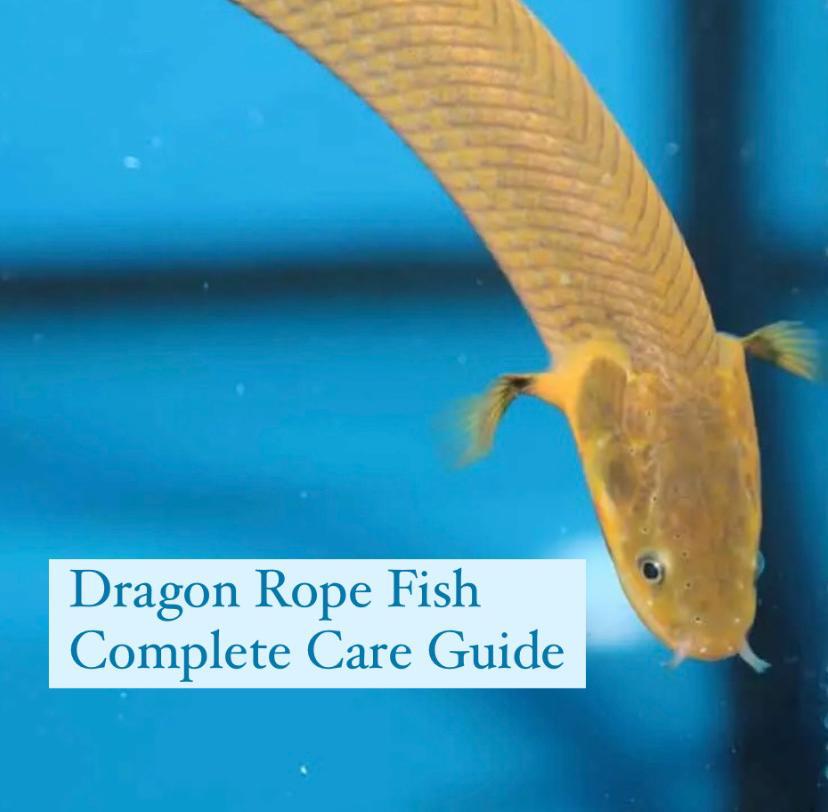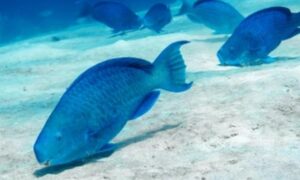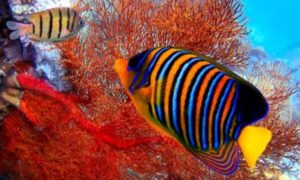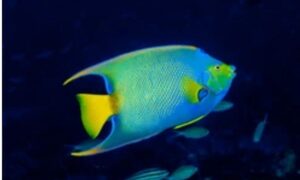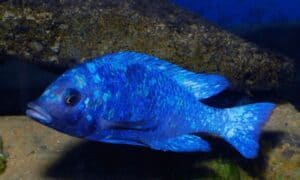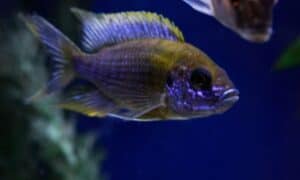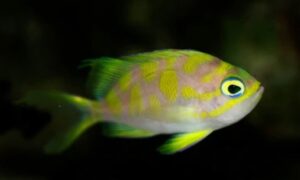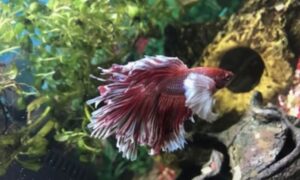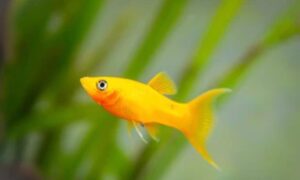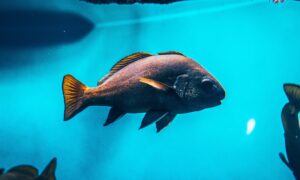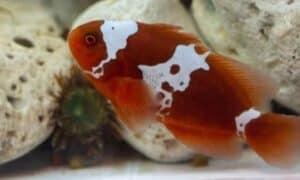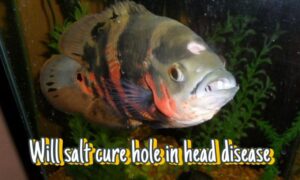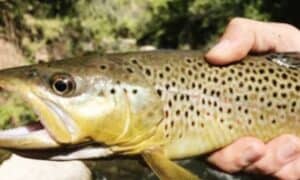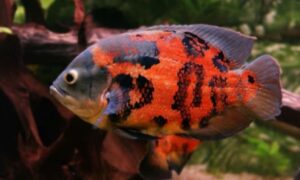Dragon rope fish
Dragon rope fish, which is also known as the reed fish, is a conspicuous and fascinating species that is highly liked by aquarists around the world. They are calm and peaceful carnivore fish that get on well with other huge, calm fish. This is a complete care guide for rope fish, we will discuss everything you need to know about dragon rope fish care.
Table of Contents
Habitat of Dragon Rope Fish
Dragon rope fish live in the same environments as other common fish species. The natural habitat for dragon rope fish would be saline and fresh water in tropical areas. Dragon rope fish are normally found in rivers of Nigeria in the Ogun River.
These areas have slightly alkaline and warm water with neutral pH water.
You will also see many debris along the riverbed like rocks and bogwood.
Dragon rope fish can also be found in environments with low oxygen; they are able to survive there because of their primitive lungs.
Tank Setup
Cover the base of the aquarium with a layer of sandy substratum. The fine grains will make sure that the fish will not scratch themselves.
On top of this layer, you must place some decorations. You must also have some rock caves so your dragon rope fish can hide when they feel unsafe. They will spend a lot of time in those caves especially in the morning if they are not used to morning feeding.
Because rope fish are carnivorous, then you can definitely add plants to their aquarium. You can include java fern and Amazon swords because Dragon fish like well-planted aquariums. A heater is very important to keep the water range between 72-82°F. pH must be in the range of 6.7-7.8 and hardness must be 4-18dH. They live stress-free in saline water. If you are keeping them in salt water, then limit the salinity to 1.020. It’s not necessary to add an air pump to keep the water moving, because dragon rope fish are used to slow-moving tropical rivers.
Also, ensure that your tank has a tight-fitting lid because dragon rope fish will try their best to escape if you give them the opportunity to jump out of the tank.
Dragon rope fish Aquarium size
Dragon rope fish requires at least a 45-gallon tank. A larger dragon rope fish will need an even bigger tank, so it’s safe to use a 50-gallon tank. Choose a tank with as much floor space as possible. Each additional Dragon rope fish you add to the tank requires roughly 10 gallons.
Tank Mates of Dragon rope fish
Dragon rope fish is a peaceful species so there are many options when choosing good tank mates for them. You just need to remember a few things while choosing their tank mates.
Initially, being a predator fish means the dragon rope fish will eat other fish if they are hungry. Normally they won’t be able to differentiate between the foods you give them and any snack-sized fish in their tank.
Tiny fish like tetras, danios, or harlequins will start to disappear because dragon rope fish will most probably eat them. Any fish you keep as their tank mates need to be larger than a dragon rope fish’s mouth so that they don’t eat it. A few good tank mates for dragon rope fish are Angelfish, Bala sharks, Rainbow sharks, etc
Also, it’s important to consider the temperament of tank mates. Truculent, territorial species are going to harass Dragon rope fish. Truculent cichlids such as Oscars or Convicts should not be kept as their tank mates.
Also, avoid adding invertebrates to their tanks. Because Small shrimp and snail species will be treated as their food. In some cases, aquarists actually choose to add these into the tank as part of their diet because they are rich in protein.
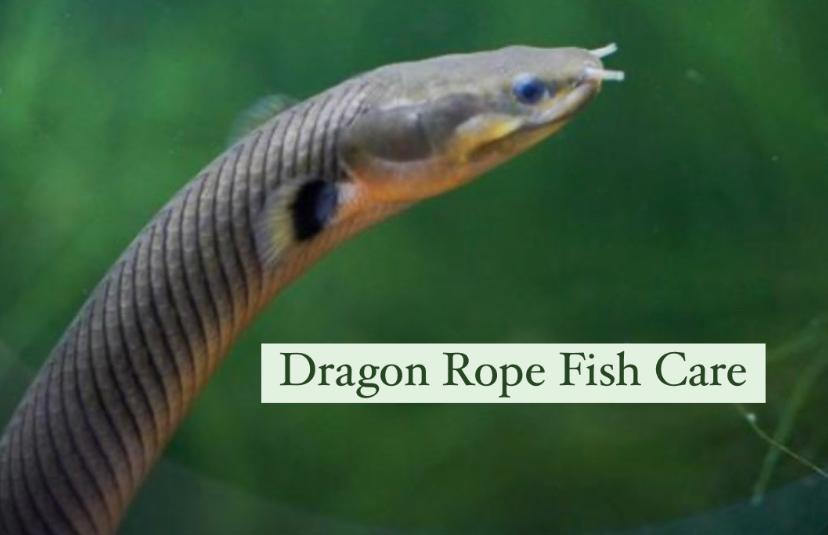
Keeping Dragon Rope Fish Together
You can keep dragon rope fish either on their own or in a group with other tank mates. Some aquarists think that they are more active while they are in small groups, but a group can take up more space, so ensure that you can comfortably fit a group in your tank so your dragon rope fish can happily swim around.
Dragon rope Fish Diet
Dragon Rope fish are carnivores so when they are In the wild, they would like to eat crustaceans, insects, and worms. They can also eat fish, but their first choice is insects and worms.
Because they are carnivores so they will eat tiny fish in your tank, so you should be very careful when you are choosing tank mates for dragon rope fish.
They are nocturnal creatures which means they are active at night while resting in the daytime and eating at night. They will quickly adapt to your feeding routines and because of your feeding routine, they can even start eating during the daytime.
The easiest options for their diet are store-bought flake and pellet foods, but dragon rope fish doesn’t always like dried foods. Frozen foods which are meaty are their favorite. Tiny fish will be more than happy to eat bloodworms, brine shrimp, and mosquito larvae which are high in protein. Once they grow up you can move onto larger shrimps like Mysis Shrimp, prawns, and even earthworms which are also a great source of protein. You can also introduce live foods.
They can survive for longer periods without food in the wild but when they are in captivity should be given a healthy and steady diet. You should give them a little bit of food every day or you must give them larger portions every other day so they stay happy and healthy.
Dragon rope fish care
Dragon rope fish are hard species, which means their immune system is strong, adapting to a range of conditions and showing resistance to disease.
In other cases, They don’t adjust well to changes in water conditions, once they are shifted to your tank you must maintain their environment.
The addition of salt in their aquarium is ideal to reduce infections in your Dragon rope fish. You should measure by adding two tablespoons per five gallons of water. The best way of doing this is adding the salt very slowly over 1.5-2 weeks so it’s not a shock for your Dragon tope fish.
There are many ways to detect illness in your dragon rope fish, but symptoms may vary depending on the disease they have but some common symptoms are the following:
Behavioral changes
They can have behavioral changes like a lack of appetite or less activity. These symptoms can start as the disease takes control over Dragon rope fish.
Changes in body color
There can be changes in color or unusual markings and injuries can indicate disease too.
A very common problem is Ich, which presents as white specks on the scales.
Breeding of Dragon rope fish
It’s hard to breed these species in captivity without the use of hormone injections
If you’re going to do this, then you must raise the temperature slightly and the addition of more tall plants will be a great way of encouraging breeding.
A male specie and a female will swim around the tank together. When the female is ready they’ll sit stationary while the eggs are fertilized. The eggs are sticky and they will stick to plants and decorations in the tank.
The juveniles will hatch after 70 hours. Juveniles don’t start eating until three weeks old; they will hatch with a yolk sac to nutrify them until then.
In this stage, it’s ideal to separate the juveniles so that they are not eaten by other fish.
Are Dragon Rope Fish suitable For Your Home Aquarium?
It’s not possible to add these fish into any old tank, as there are a few things you must consider.
The main restriction is tank mates. If you have tiny fish, then they will very soon be eaten.
Dragon Rope fish need huge and calm tank mates that can’t fit in their mouths as their snack.
In the wild, they are found in African rivers that have lots of other tropical fish species. Thus dragon rope fish like water conditions that are typical of other famous aquarium fish too.
If you observe that you can’t add dragon rope fish into your existing tank, then it isn’t difficult to design a new one around them since they have quite similar needs as other fish species.
It’s a great deal to have dragon rope fish as your pet since they will entertain you as you watch them slide around the base of your tank.
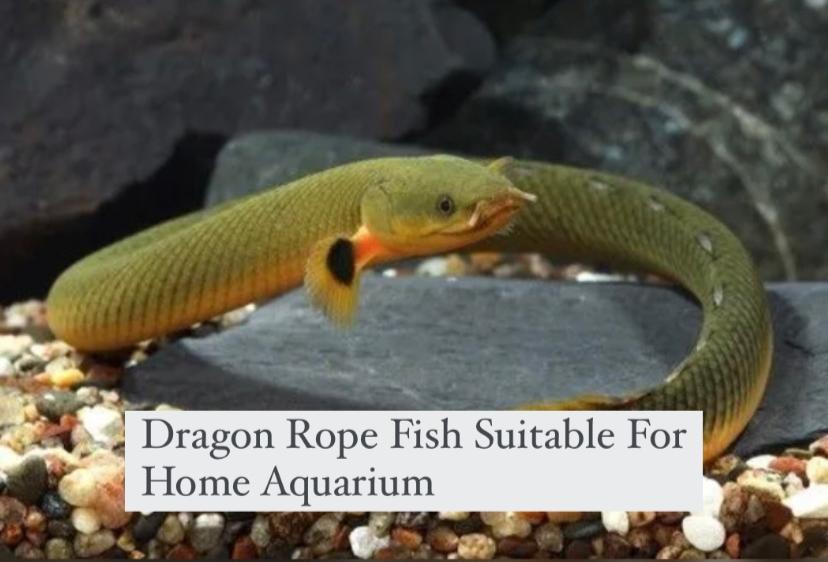
Conclusion
In conclusion, the dragon rope fish, also known as the reed fish, is a captivating and popular species among aquarists worldwide. Its calm and peaceful nature, along with its unique appearance, make it a desirable addition to any aquarium. Throughout this comprehensive care guide, we have covered all the essential aspects of dragon rope fish care, including their habitat, tank setup, suitable tank mates, diet, and overall well-being. By following these guidelines, you can provide a healthy and enriching environment for your dragon rope fish, ensuring their happiness and longevity in your home aquarium.

